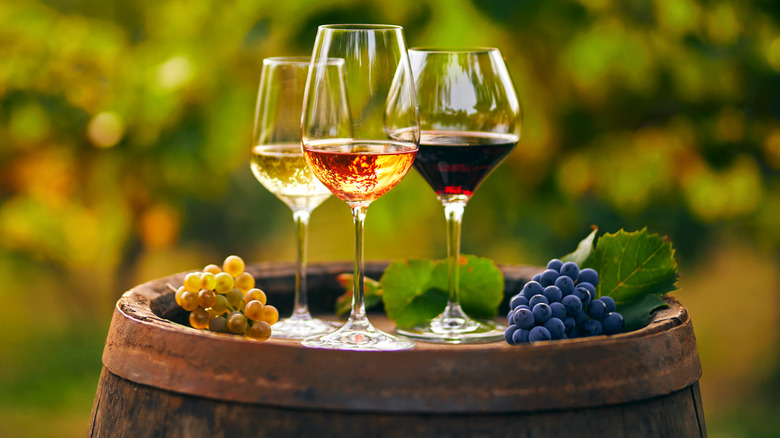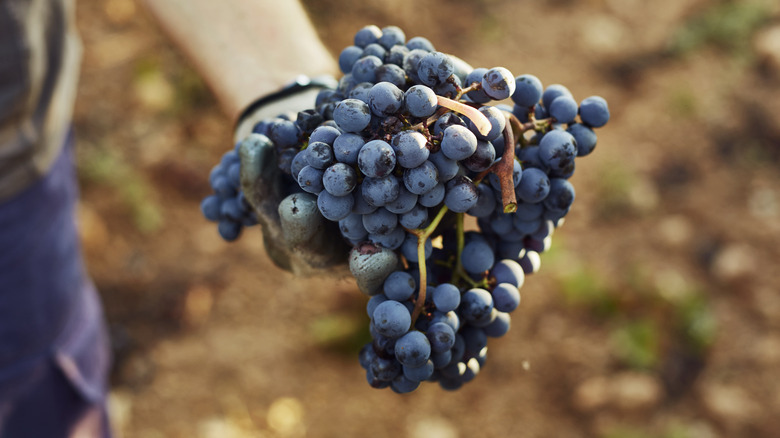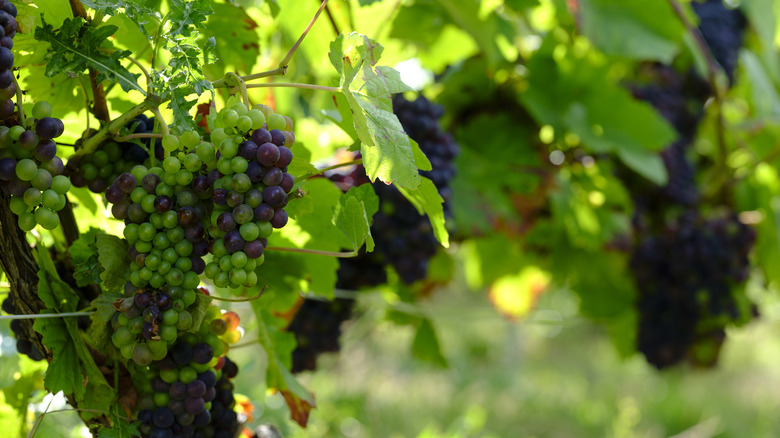The Secret To Making Low ABV Wine Without Dealcoholization
You might assume that intentionally decreasing the ABV of a bottle of wine is a new practice, associated with the growing demand for no- and low-ABV beverages. However, winemakers have been altering wine to modify its alcohol content for generations.
The average bottle of table wine has an ABV of between 11% to 13%. Many wine found in the U.S. will have an ABV of 14% or less, as it is taxed at a higher rate if the alcohol content exceeds that amount. Because of this, some winemakers subject their wines to a dealcoholization process after production to bring it below the desired threshold. This same practice is used for most no- or low-ABV wines: A standard wine is made, and then some of the alcohol is removed. The downside is that the dealcoholization process can sometimes drastically alter the wine's natural nuances and flavor profile.
However, some winemakers produce naturally low-ABV wines using a specific style of canopy management that restricts energy to the vines. This results in flavorful products with lower ABVs, eliminating the need for additional processing.
Factors that affect ABV of wine
Several factors naturally affect the ABV of wine without requiring additional processing. Climate is a significant factor, with warmer climates generally leading to wines with higher alcohol content. When wine grapes are exposed to abundant sunshine and warm conditions, they ripen more quickly, resulting in fat, juicy grapes rich in sugar.
These grapes are then fermented with yeast to produce wine. The yeast consumes the sugar and converts it into alcohol. The higher the sugar content, the more alcohol can be produced. That's why Californian wines are often bold, fruity, and boozy, compared to wines from colder regions.
The ABV of wines also depends on when the grapes are harvested. Fully ripened grapes have the potential to produce higher ABV wines, whereas grapes picked prematurely will contain less sugar and yield lower ABV wines. The Brix scale is often used to measure grape sugar content and anticipate the resulting ABV.
Canopy management and low ABV wines
Once you've considered climate and harvesting schedules, another key method for naturally lowering the ABV of your wines is canopy management. This term refers to how grapevines are structured and pruned during grape growth, and it can significantly affect a wine's final characteristics.
Beth Forrest of Forrest Wines in New Zealand produces a range of low-ABV wines using specialized canopy management techniques. As Forrest explained to Food Republic, "We have discovered a way to reduce the grape plant's ability to make sugar in the ripening process without disrupting its ability to make flavor. By limiting the leaf area to fruit weight ratio, we reduce the energy the plant has to produce sugar."
This technique involves trimming the top third of the grape canopy, which contains the youngest shoots — those that produce the highest sugar levels in the vine. The older shoots farther down the vine are then forced to generate more sugar, but they do so at a slower rate than the discarded top shoots would have. "The plant hangs its fruit in the sun for the same period of time and accumulates full flavor but cannot make the same density of sugar concentration in this time compared to the plant with a full leaf canopy," Forrest said.



